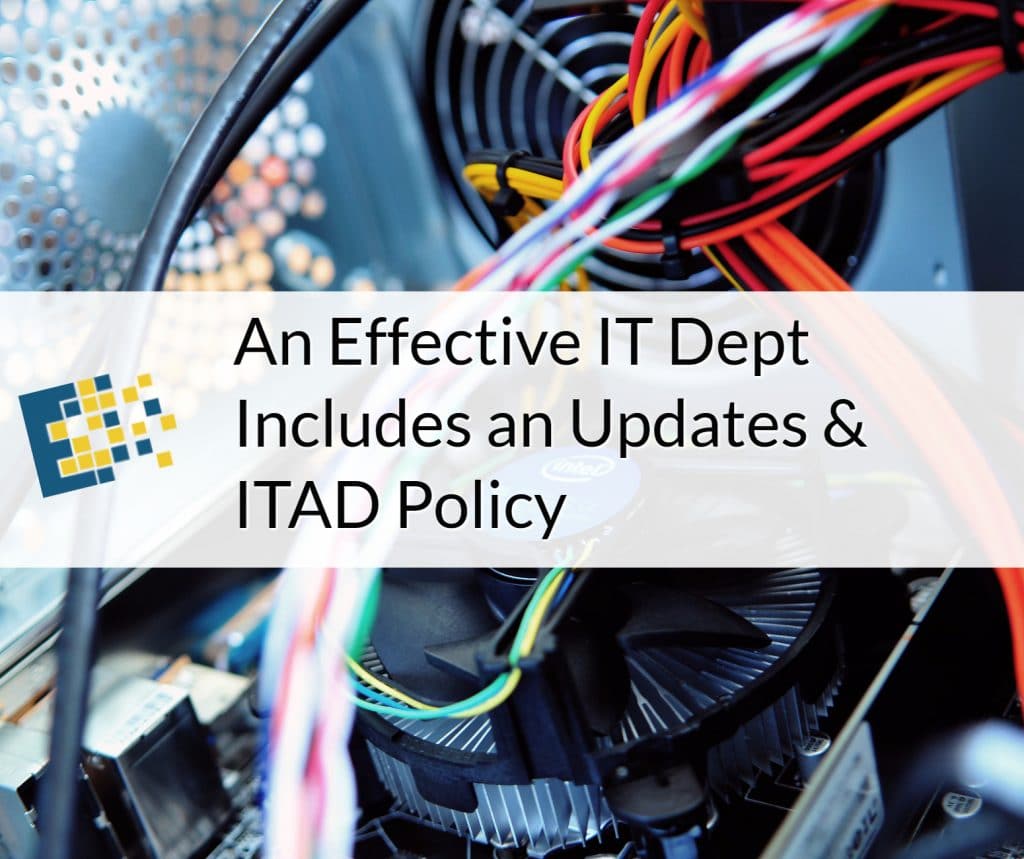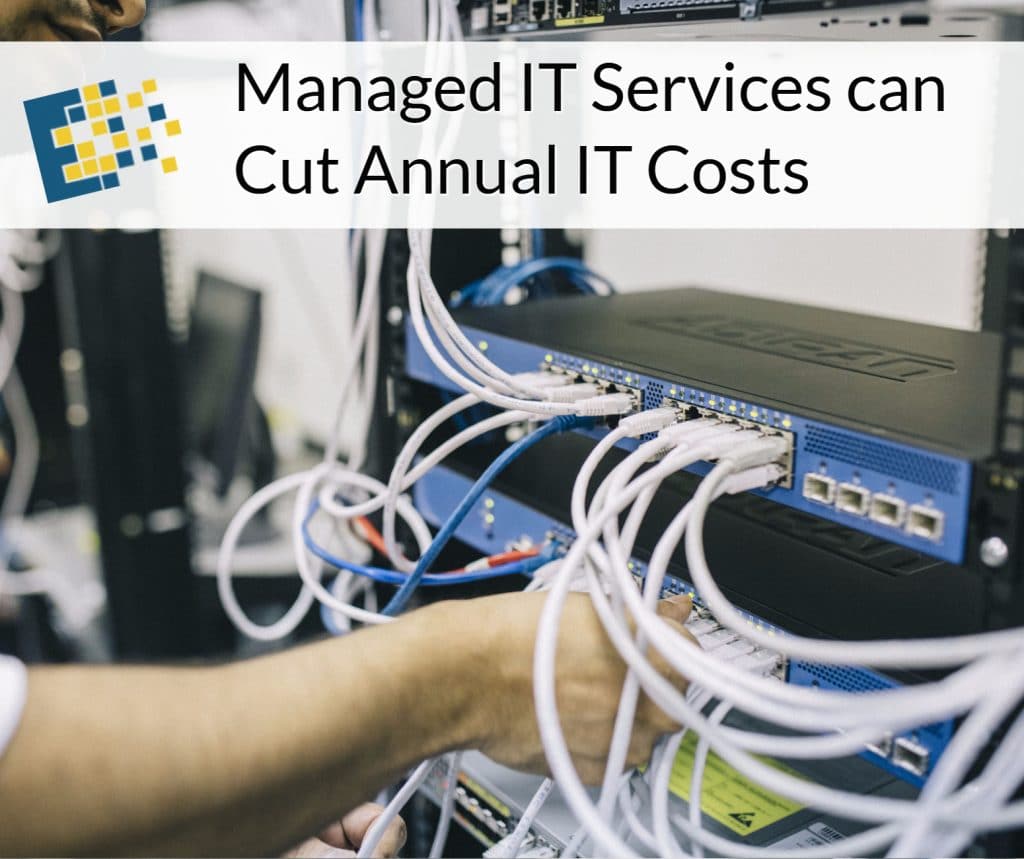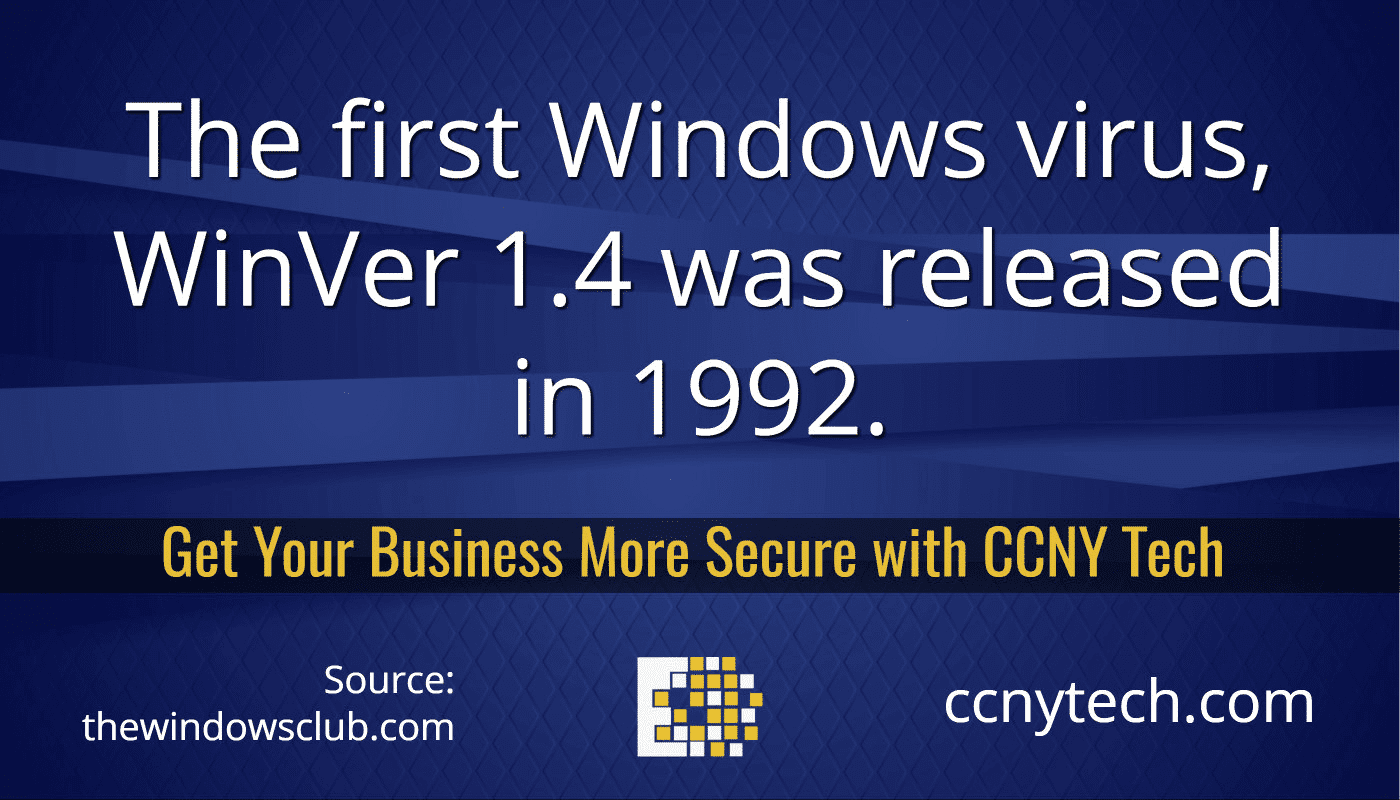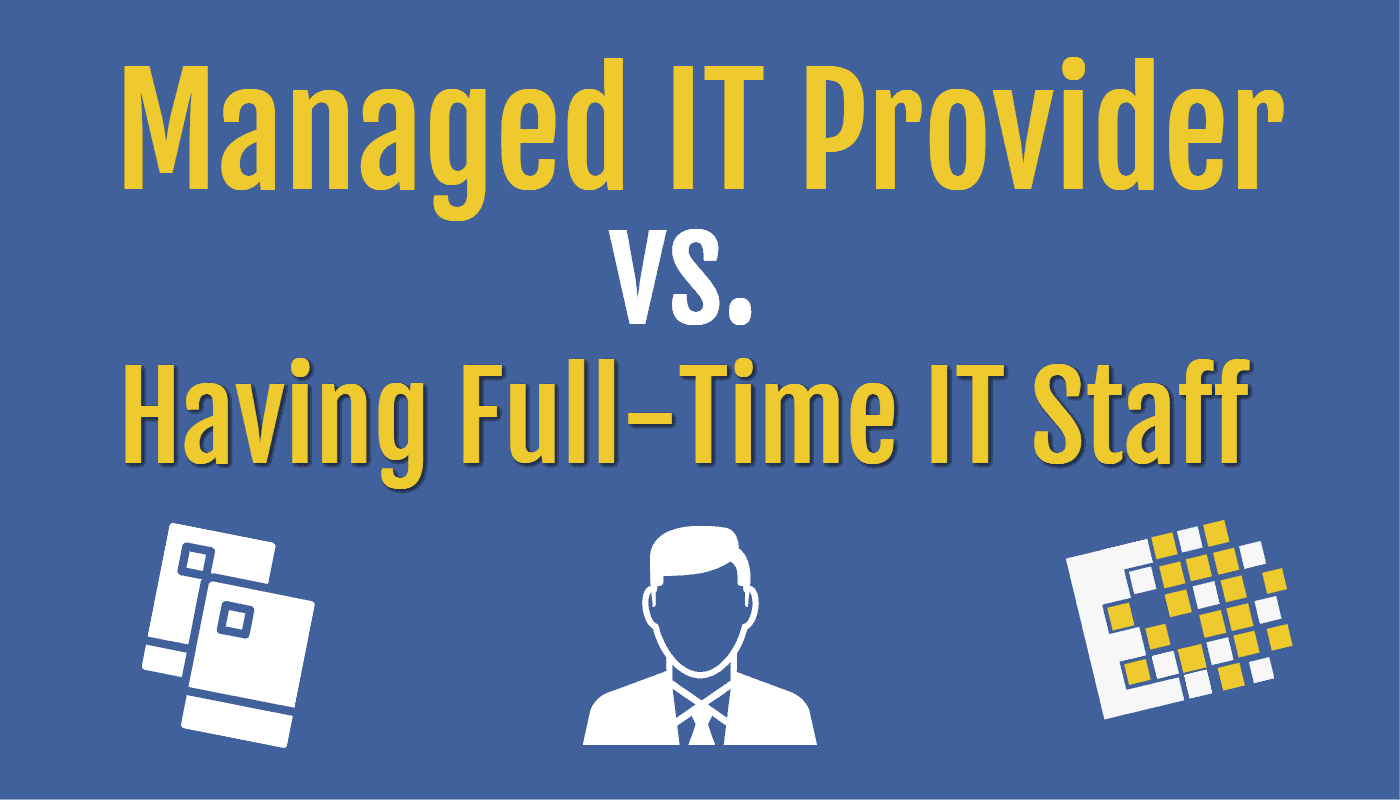Ponemon Institute, the average cost of a U.S. data breach is $6.5 million.
Month: October 2017
Internet-enabled Jacket
There’s an internet-enabled jacket which gives you a hug every time a Facebook friend likes your status. – http://www.dailymail.co.uk/sciencetech/article-2214525/The-Facebook-jacket-hug-likes-you.html
220 million tons of old computers…
220 million tons of old computers and other technological hardware are trashed in the United States each year. – thefactspeak.com
ITAD Services
Small Business: Compare Linux VS Windows

Choosing an operating system (OS) has more implications than you may realize. For small businesses in particular, there are systems that better fit your business needs, and those that do not. Without fully understanding your requirements, you may find that your operating system restricts which applications you can run, runs too slowly, prevents certain configurations, among other more critical issues.
Two of the main operating systems for businesses are Windows and Linux. This article will serve as a guide to help distinguish between the two and allow you to better assess your specific requirements.
Windows
Windows is generally a go-to operating system. As a trusted brand with well-known products, they have acquired over 75% of the OS software market. While it has proven to be a respectable and user-friendly product, it is not a one-siz
e fits all solution.
One of the major concerns with windows OS is license fees. They are fairly expensive, and costs increase with the number of employees you have. However, there is a familiarity with Windows that Linux does not always offer.
Some of the other benefits of Windows includes:
Support – Although you have to pay licensing fees, you are also purchasing your support team. Because Linux is free, you miss out on support features.
Easy Integration – Windows systems generally play nicely with others. They are easy to integrate and very compatible with other systems and software. Linux, on the other hand, is not as compatible with third-party software.
Ease of Use – Not only is it easy to use through famili
arity, it also offers more specialized features.
While Windows is user-friendly for administrators, it is not as simple to configure. Linux uses simple text files while Windows OS uses Dynamic-Link Library (DLL). DLL formats are more complex, as compiled, executable files.
A feature that Windows offers to aid in simplicity of use is Hyper-V. It is a virtualization feature which can be used alongside other applications to minimize hardware requirements. It allows the operator to run applications over the internet using Remote Desktop Services. This means more consolidation and fewer PCs.
Linux
While Linux is lesser-known by the general population, it is installed on over 95% of the world’s best supercomputers. Its fast performance and small resource requirement makes it a top choice.
Security – Linux was designed with se
curity in mind and allows for stricter preventative measures and has more integrated throughout.
Configuration – While both systems can be configured, Linux allows for more in-depth configuration and is simpler with plain text files.
Size – Linux is a much smaller and lighter OS, taking up less space on any machine. It’s smaller footprint and resource load allows it to be easily installed on a wide array of architecture.
Not only has Linux been embraced by the OS market because it is free and can be re-distributed, it is also a better fit for many administrators. It can be easier to automat
e, organize data, setup SNMP monitoring, and more.
“However, Linux itself is not a complete operating system (it is just a kernel) and requires an additional set of software to be bundled with
it. These bundles, known as distributions have hundreds of flavours available; more popular ones include Ubuntu, SUSE and Red Hat.”
Windows vs Linux
Choosing the right platform is very influential for your business.
It is always worthwhile to research and test both OS models to select the one that best fits your company and security needs. When deciding which software is best for your environment, it can help to first check reviews and opinions of users like yourself.
 At CCNY Tech we recommend Windows for most businesses due to its versatility, security and compatibility overall. Give us a call at 1-800-566-4786 about your IT hardware and hybrid needs. We can help you upgrade your network and IT Infrastructure and licence your operating system.
At CCNY Tech we recommend Windows for most businesses due to its versatility, security and compatibility overall. Give us a call at 1-800-566-4786 about your IT hardware and hybrid needs. We can help you upgrade your network and IT Infrastructure and licence your operating system.
Did You Know?
Microsoft didn’t create their original operating system, MS-DOS. They licensed an OS called 86-DOS – Wired.com
A Secure Transition to the Cloud for Businesses
There are a number of benefits for companies transitioning to the cloud; it offers reduced cost, easy access, greater scalability, and more. Unsurprisingly, more and more businesses are making the move. However, not all cloud services are the same. It’s important to have a trustworthy provider, as well as one which offers adaptive authentication, control, and an excellent security policy.
Choosing the right third-party cloud services provider leaves you with a few important things to consider:
Liability: Who is responsible when something goes wrong?
Sovereignty: How will your data be handled?
Cohesiveness: Does their service align with your business requirements?
 Above all, security is usually the number one concern. Any cloud services provider that you choose should have rigorous encryption in place. You have to be sure that any data being transitioned to the cloud is encrypted the moment that it arrives, rather than any time after. It may not seem it, but without top security, your data is exposed the moment it enters the cloud. For this reason, best practice is to encrypt all data before it leaves your facility. Having two layers of encryption helps to protect you even if one layer is compromised.
Above all, security is usually the number one concern. Any cloud services provider that you choose should have rigorous encryption in place. You have to be sure that any data being transitioned to the cloud is encrypted the moment that it arrives, rather than any time after. It may not seem it, but without top security, your data is exposed the moment it enters the cloud. For this reason, best practice is to encrypt all data before it leaves your facility. Having two layers of encryption helps to protect you even if one layer is compromised.
While it is true that security risks are legitimate when it comes to cloud services, do not let that deter you. It can certainly be done, and it can be incredibly efficient and cost-effective.
Related Article:
Why hybrid cloud is the future of enterprise IT? – Click Here
It is important to consider all of the obstacles first though. Another concern is deciding which information should remain in-house and which should be transitioned to the cloud. It is not uncommon for businesses to use a hybrid cloud model and keep some of their most sensitive company and customer data within the facility. At the end of the day, you have to find reliable cloud services because your business is still responsible for the security of the data you store there.
Another major concern is: does the security policy allow for an efficient hybrid system? Are you able to work seamlessly and securely across the board?
 Virtual private networks (VPNs) are common when accessing remote information. However, accessing cloud services often has different security policies and allows for different amounts of control. It’s important to be sure that your third-party services has the features that you need, as far as access goes.
Virtual private networks (VPNs) are common when accessing remote information. However, accessing cloud services often has different security policies and allows for different amounts of control. It’s important to be sure that your third-party services has the features that you need, as far as access goes.
Because your business is ultimately responsible for its data, no matter where it’s stored, it’s important to have technology solutions that allow you to mitigate risk. A major contributor to this is to step up your level of authentication for devices that can access the cloud data. Employee error, poor usernames and passwords, unprotected devices, all of these factors add risk. It is crucial that you always keep your employees aware of security threats and trained on how to prevent them.
For more information check out this blog about Security Awareness Training: Click Here
One solution to minimize these risks is to deploy an authentication portal. This means that any user hoping to access the cloud data will need authentication via the business’s domain. This enables you to establish control over access and devices.
It is clear to see why cloud solutions are becoming so popular but it is important to know the limitations as well. If you are considering cloud services, be sure to check out these crucial aspects and keep security at the top of your list.
 CCNY Tech has the best in class cloud, hybrid and physical hardware solutions for you business. Some businesses choose to have a combination of cloud and physical hardware in their stack. Give us a call at 1-800-566-4786 or contact us. Since 1988 we have been helping business with their IT needs.
CCNY Tech has the best in class cloud, hybrid and physical hardware solutions for you business. Some businesses choose to have a combination of cloud and physical hardware in their stack. Give us a call at 1-800-566-4786 or contact us. Since 1988 we have been helping business with their IT needs.
Only 12.5% of E-Waste is Recycled
Only 12.5%, is a very unfortunate stat. We Recycle Resell and Reuse IT Hardware here at CCNY Tech. CCNYTech.com
Becoming Efficient with IT Asset Management
IT administration is becoming increasingly more relevant to companies of all industries. Properly evaluating and managing systems can help you to stay efficient and avoid unnecessary asset purchases. Small to medium-sized businesses, in particular, struggle with IT asset management. Limited budgets and staff make it difficult to identify what is redundant and what is lacking.
 Understanding the IT asset lifecycle can be key to keeping an effective IT infrastructure. It is important to understand how all of your equipment works together, works for your company, and where it is in its working life. Using software to track data and keep records of both the maintenance data and financial data is crucial.
Understanding the IT asset lifecycle can be key to keeping an effective IT infrastructure. It is important to understand how all of your equipment works together, works for your company, and where it is in its working life. Using software to track data and keep records of both the maintenance data and financial data is crucial.
Implementing a centralized system of organized records can help you to make strategic decisions about your IT and help you to avoid needless maintenance expenses. IT asset management has numerous benefits and has a direct impact on lowering hardware and software spending. Having better control over the IT asset lifecycle also helps businesses improve efficiency and reliability.
Well-executed IT asset management is a worthwhile business initiative. It is not only a way to track machines and software, but it also helps you to create a long-term plan and gain a better understanding of your infrastructure and inventory. It allows you to make more informed decisions and design better processes. You can create a strategy that works for your business.
Essentially, IT asset management works together to help you calculate risk. Age of assets, leasing periods, warranty expirations, software licenses – all of this information should be collected and tracked throughout an asset’s life to keep your company in sync with your valuable IT assets.
When you create a centralized and sharable system, you can keep your whole team on the same page. This can be done through an electronic inventory management system. By recording information such as contracts, locations, costs, and disposal, you are taking the guess work out of your IT.
Furthermore, old and outdated software and equipment is probably costing you more than you know. Having a centralized system can keep you aware of necessary maintenance, updates, and upgrades. A clear view of all of your hardware and software assets can result in greater productivity and reduced repair costs.
Managing and protecting your investments is not a simple task but is certainly worth the time. You must identify and evaluate your assets regularly and put the time into proper maintenance. Setting up the right policies and procedures may seem overwhelming, but in an IT world, it can keep you competitive.
IT forecasts and budgets are essential to any company. Businesses of all sizes are constantly trying to cut costs and improve efficiency. Having a clear understanding of where your IT infrastructure is and where it will need to be plays an enormous role in the success of your business. IT asset management is a key to evaluating and improving your overall IT investment.
 CCNY Tech is an IT sales and services company. For over 25 years, CCNY Tech has been supplying IT equipment as well as providing maintenance and IT recycling services. Partnering with some of the top brands in the industry, they are experts in equipment and custom configurations. CCNY Tech IT professionals provides custom solutions to businesses of all sizes. Learn more at ccnytech.com.
CCNY Tech is an IT sales and services company. For over 25 years, CCNY Tech has been supplying IT equipment as well as providing maintenance and IT recycling services. Partnering with some of the top brands in the industry, they are experts in equipment and custom configurations. CCNY Tech IT professionals provides custom solutions to businesses of all sizes. Learn more at ccnytech.com.
Managed IT Services vs. Internal IT Staff
Many companies without full-time IT staff choose to hire IT services companies hourly. While it can be very cost-effective to hire engineers by the hour, compared to full-time with salary, benefits, and vacation, there may actually be a better solution entirely. Managed IT services are growing in popularity for businesses of all sizes, in all industries.
Here are some of the key features of managed services:
Partnerships
 Business owners understand partnerships. A good partnership exists when both parties benefit from the other’s success. This is how managed services work. In most cases, you pay the IT services company a flat rate which includes all updates, maintenance, and even emergency fixes. For this reason, the IT company is highly motivated to keep your equipment running smoothly, as it means the same pay for fewer emergency visits. At the same time, you have a set IT budget with the services you need, a well maintained system, and a solution in case of emergency.
Business owners understand partnerships. A good partnership exists when both parties benefit from the other’s success. This is how managed services work. In most cases, you pay the IT services company a flat rate which includes all updates, maintenance, and even emergency fixes. For this reason, the IT company is highly motivated to keep your equipment running smoothly, as it means the same pay for fewer emergency visits. At the same time, you have a set IT budget with the services you need, a well maintained system, and a solution in case of emergency.
Contrarily, when you hire IT contractors on an hourly basis, there is no true form of partnership. Of course, any respectable IT technician will provide their very best service and fix any issues you may be having with your equipment. However, not only do they have less vested interest in your systems, they also tend to cost more in the long run. Furthermore, hourly updates, upgrades, and repairs make it very difficult to budget.
Managed IT services also offer the benefit of a team of engineers, rather than one technician. There are diverse opinions and skillsets that allow your IT infrastructure to receive well-rounded diagnosis and care. When you consider what you might want out of a partnership, you would likely choose to have as many knowledgeable and experienced professionals on your side as possible. This is not to say that hiring an hourly professional cannot be sufficient, but it is one of the many reasons that companies are switching to managed services.
Related Article: http://businessspree.com/benefits-investing-managed-services/
Maximized Benefits
Managed IT services allows you to maximize the amount of service you receive for a cost that you help determine. You are typically charged a monthly flat rate which covers the equipment and services that you decide.
However, if you rarely need IT help within a year, hourly services may better suit your systems. For most businesses, though, this is unlikely. Those who do choose to perform maintenance sporadically usually end up with the emergency break/fixes. Regularly scheduled maintenance, software updates, security updates, installations, etc. help to keep your company competitive and productive.
 “According to Resource One Inc. companies who switched to managed IT services found significant savings.
“According to Resource One Inc. companies who switched to managed IT services found significant savings.
- 13 percent cut annual IT costs by an incredible 50 percent or more
- 46 percent cut annual IT costs by 25 percent or more
- 50 percent cut annual IT costs costs between 1-24 percent
With almost half of all companies who switch to a managed IT service saving a phenomenal quarter of their IT costs each year, managed IT services is the obvious choice if you want to reduce costs and increase profit margin.”
Decrease Downtime
Decreased downtime is one of the biggest incentives for managed services. We all know that IT equipment should be kept up to date. We also know that security measures are constantly changing and that we have to stay ahead of the game. Unfortunately, not many companies have the time and money to spend on these issues.
Because an IT budget is usually so unpredictable, most companies try to keep it as low as possible and save some for emergencies. This is how we end up with outdated equipment, security breaches, bogged down networks, and complete system downtime. Rather than hiring an hourly contractor to check on our systems and keep them running well, we wait until its past time for a repair.
Check out this video on calculating the cost of downtime!
With managed IT services, it can be all-inclusive. You can generally select which services and features are most important to your business and can then use what you need monthly. You are far more likely to call your IT technician when an issue arises because you know it won’t increase your costs. The more you work with your partner, the more they understand your systems and your overall business IT needs. This also means they are more familiar with your equipment and can become increasingly more efficient at maintenance and repairs.
By addressing your small technological issues as they arise, you prevent them from turning into major, costly problems; downtime being one of the largest issues. Because so much of our businesses are centered around IT, downtime can completely stop productivity. Employees cannot work during this time and it impacts morale, reputation, and output.
While hourly rates may initially seem like a better deal, managed IT services actually gives you the best return on your IT costs and will likely save you much more in the way of time, equipment, and repairs.
Even if you have a full-time IT professional or maintenance staff, you may want to check out this blog “Who is Really Responsible for IT Maintenance?” It has some great suggestions for the use of managed services and remote monitoring management (RMM).
 CCNY Tech is an IT sales and services company. For over 25 years, CCNY Tech has been supplying IT equipment as well as providing maintenance and IT recycling services. Partnering with some of the top brands in the industry, they are experts in equipment and custom configurations. CCNY Tech IT professionals provides custom solutions to businesses of all sizes. Learn more at ccnytech.com.
CCNY Tech is an IT sales and services company. For over 25 years, CCNY Tech has been supplying IT equipment as well as providing maintenance and IT recycling services. Partnering with some of the top brands in the industry, they are experts in equipment and custom configurations. CCNY Tech IT professionals provides custom solutions to businesses of all sizes. Learn more at ccnytech.com.
Get a Quote for Pre-Owned Servers: Utica/Rome – Syracuse – Rochester – Buffalo – Albany – NYC – Ithaca
Guide to IT Security Awareness
IT security is essential and becomes a more widespread topic with each passing year. Every company knows that it needs it, but many find it overwhelming. Regardless of your level of security though, at the end of the day, it comes down to the end-users. It is important for all members of a company to recognize and understand their impact on IT security. This article will help serve as a guide for awareness.
 Every company should have the essentials: firewall, passwords, pop-up blockers, etc. However, after all of that, the users are the first line of defense in IT security. For this reason, security awareness training should be a regular meeting. While you may assume that the simple things are “common sense,” you do not know what the average user has been exposed to outside of the workplace.
Every company should have the essentials: firewall, passwords, pop-up blockers, etc. However, after all of that, the users are the first line of defense in IT security. For this reason, security awareness training should be a regular meeting. While you may assume that the simple things are “common sense,” you do not know what the average user has been exposed to outside of the workplace.
It’s important that every member is on the same page and supplied with the same tools to recognize and prevent security threats from turning into security breaches. This can be done with some simple training that focuses on a few key points.
Awareness
Simply having the discussion about threats helps to create a culture of awareness within the organization. While this definition can range, the primary goal is to be sure that everyone understands what security for your company looks like. For the average user, it does not have to be very complex. Mostly, you want them to understand where threats may be and how their actions can affect the entire network.
This is where you would want to discuss changing passwords, creating secure passwords, recognizing phishing scams, emails with strange texts and senders, etc. The concerns for the security of the organization have to become part of the company culture. All members should not only feel accountable, but also motivated to help protect against security breaches.
Understanding
Once you establish awareness, it’s important that employees truly understand what they are looking for. A good training program will inform employees about what current attacks look like and how they affect the organization.
Example: The Equifax Attack and How it Impacts Your Data Security
You must also teach what to do when actually facing an attack. This training can also be done continuously through emails and newsletters. This could mean discussing everything right down to not plugging an unknown USB into a company computer. Also, not clicking on suspicious links. Showing examples and covering the very basics may seem like overkill but is actually just helping to create a well-rounded organization.
Behavior
Lastly, you want to see changed behavior. Once employees are aware of malicious activity and understand that they play a part in company security, you must provide clear directions for their efforts. It is best if your organization creates a plan for what members can do when they spot an issue.
For example, what should your end-users do when they receive a suspected phishing email? You can keep things very simple, but make sure that the entire company is on the same page.
Security awareness training can be your wisest investment. It is the most cost-effective security solution and actually plays an enormous role protecting against breaches. While it does require some time, it helps to create a more unified culture as well as a more secure environment.

A great way to begin implementing a security awareness program is to send your network specialists or management to cyber security training. There are courses that can be taken by members of your organization to learn about threats and protective measures that can then be taught throughout your company.
https://www.sophos.com/en-us/support/professional-services/training-offerings.aspx
 CCNY Tech is an IT sales and services company. For over 25 years, CCNY Tech has been supplying IT equipment as well as providing maintenance and IT recycling services. Partnering with some of the top brands in the industry, they are experts in equipment and custom configurations. CCNY Tech IT professionals provides custom solutions to businesses of all sizes. Learn more at ccnytech.com.
CCNY Tech is an IT sales and services company. For over 25 years, CCNY Tech has been supplying IT equipment as well as providing maintenance and IT recycling services. Partnering with some of the top brands in the industry, they are experts in equipment and custom configurations. CCNY Tech IT professionals provides custom solutions to businesses of all sizes. Learn more at ccnytech.com.
The Best Ways to Get Rid of Unwanted Data

The data that you store is likely very important. It can contain sensitive company and customer information, as well as information with profitable potential. Businesses in particular are constantly store and saving mission critical files, databases, and documents. The problem is, a lot of the data we store can quickly become obsolete or redundant. And all of this data takes up a ton of space and can even bog down your systems. You may go through and regularly delete old or confidential files, as you should, but is it ever truly deleted?
This article will serve as a guide to help you truly destroy unwanted data, rather than just hiding it and leaving it vulnerable.
One solution, depending on the sensitivity of the information, is to destroy the hardware on which it is stored. When data is absolutely confidential, it may be best to store it on a hard drive that can then be physically destroyed when the information is no longer needed. Here is a link to a number of effective ways to destroy hard drives:
Another solution, if you’re not crazy about the idea of destroying hardware, is to save the information you would like to keep in a separate location, and then simply wipe the drive of everything else. There are different methods of wiping drives depending on the operating system, but they are all fairly straight forward. Doing this will return your drive to its original settings and remove all traces of data that were once there. You can then re-download the data you wish to keep.
Our recommended solution would be to use a professional IT services company for Data Destruction. This is usually a sub-service of IT Asset Disposition (ITAD). ITAD is the removal and disposal of all old, unwanted, or obsolete hardware and data.
While there are many important aspects of IT Asset Disposition, arguably the most important is the protection of sensitive data. Proprietary information, personal customer data, and other forms of data that need to remain confidential are under constant threat from cyber criminals. Time after time, there is yet another company making headlines for a breach in their network resulting in critical data being compromised and ending up in the wrong hands. The stories of sophisticated, coordinated attacks are all too familiar for any systems administrator, but there is a much simpler way for breaches to occur that may be overlooked; a hard drive containing this sensitive material is physically stolen.
Our on-site data destruction ensures that company and customer data will never leave your facility. Any privacy and security concerns can be addressed with proper data destruction of your hardware and software. Our team is sure to erase and destroy retired data to prevent security leaks and to free up your resources.
Check out this video about ITAD!
Or call us at (315) 724-2209 and ask to speak to our ITAD expert!
















